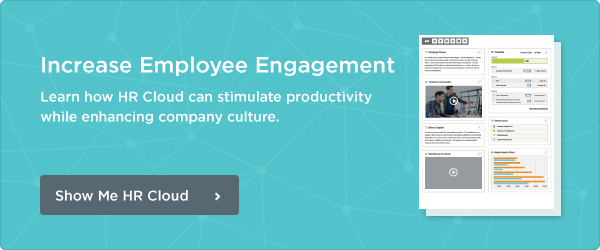
 Try
Out
Our
Try
Out
OurEmployee Engagement Software For Free

An article in Fortune discussed workplace predictions of 2015, one of which is the rise of a Chief of Work. A Chief of Work would work with an eye toward building a culture that attracts top talent, or what Peter Andrew, workplace strategy director, calls “the complete experience of working for the company, and how that affects performance.”
What’s interesting about this function, as clarified more fully in the study that looks ahead to the workplace of 2030, is that it’s envisioned as a role with responsibility for aligning talent, technology, and place (real estate/environment). The entire work experience, after all, includes the virtual workplace as well as the physical locations where work occurs such as company offices, co-working spaces, and even home offices or coffee shops. The study authors write, “In almost every organization today, people already work outside the corporate workplace. These places are an extension of the high performance workplace and have to be deliberately considered as part of the overall work (and life) experience.”
The Chief of Work would be a fascinating addition to the executive team, wouldn’t it?
The Importance of Culture. Reinforced.
When we contemplate adding this position to the seemingly endless parade of C-suite roles we already have (CEO, CFO, CMO, CIO) it may appear, at first glance, it’s the last thing we need. But the Chief of Work would be a more fully realized version of the already existing (in a few organizations) position of Chief Culture Officer. The CCO has often been described as the executive responsible for ensuring that “strategies, ideas and implementations generated at all levels of the organization are in alignment and in sync with the company's overall mission and business imperatives” —all while nurturing the living, breathing, ever-evolving organism that is company culture.
The Chief of Work takes this a bit further. The key is in the alignment and syncing of what until now have been thought of as three very separate and distinct areas of business concern: the CHRO handles talent, the CIO manages technology, and the COO coordinates facilities and space. Yet all three of those areas meet up at the sweet spot of the total employment experience. And the employment experience affects behaviors, actions, assumptions, attitudes and beliefs of all employees. The culture.
HR Impact
So what, if we move into the future and find ourselves hiring Chiefs of Work, will the impact be for human resources professionals? In my estimation, several changes could occur.
Tweet: What if we move into the future and find ourselves hiring Chiefs of Work? @HRCloud
First, HR leaders may find themselves reporting to the Chief of Work, with the talent agenda and accompanying strategies nestled under this position. Anything and everything that has to do with people will need to be connected.
Secondly, this may lead to a further carve out of human resources responsibilities, resulting in two related, yet divergent functions in an organization: the “Transactional” HR department (responsible for benefits, employee relations, HRIS, compliance, etc) and the “Transformational” HR department (responsible for talent management, performance management, learning and performance, leadership development and strategy). If this occurs, it’s possible that Transactional HR would report to the CFO while Transformation HR would report to the Chief of Work.
So what should human resources professionals do to prepare?
Be Part of the Evolution
The potential rise of the Chief of Work provides opportunities for HR professionals to not only become fully integrated and indispensable members of their leadership teams but also offers the chance to gain increased responsibilities in setting the strategies of the organization related to the entire work experience. And this requires immersing oneself in learning about areas outside the traditional HR body of knowledge.
HR professionals must develop an understanding of technology capabilities and design, user experience, and how individuals interact with all manner of technology. Human resources practitioners should also understand how space, environment, and working conditions (“places to work” not “workplaces”) affect the employment experience and the culture. Cubicles or open space? Colors? Artwork? Pods? A co-working environment? All come into play.
I envision the Chief of Work as being similar to an Executive Chef who assembles a team of chefs and asks them to bring their best recipes to prepare a communal feast. No longer would the CIO make one dish (technology), the CHRO or Head of Talent Acquisition concoct another (talent), and the COO prepare a third (real estate/space)—all to be enjoyed separately. Instead the team will prepare the three dishes together, fully aware they must compliment each other, satisfy the palate, and create a memorable dining experience.
A delicious work experience, compliments of the Chief of Work.
Keep Reading
Benefits of Having a Company Intranet
Company intranets have been a part of corporate life since the mid-'90s. But in the last
Top 8 Workvivo Alternatives for 2024
Meta recently announced that it is shutting down its employee communications tool








